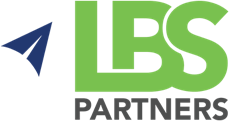The Lean Principles
Lean is defined as a methodology which maximises value for the customer by eliminating waste from a company’s activities. Below, we will identify the five Lean principles to provide a path for the implementation of Lean Thinking and Continuous Improvement within an organisation.
These are stated as:
- Value
- Value Stream
- Flow
- Pull
- Perfection
VALUE
Value must always be defined from the end customer’s perspective. The customer pays for the product or service, so Lean Thinking considers the following questions to define value:
Would the customer pay for the activity?
Was the product or service transformed or improved in some fashion?
Was the task or activity done Right-First-Time?
To help gain a clearer definition of the difference between Value and Waste, Lean defines waste under the following categories:
Transport, Overproduction, Inventory, Over-processing, Unnecessary Motion, Defects, Waiting, and Skills. Take a few minutes to apply the 8 wastes to your own workplace and you will be surprised at how many you will be able to identify. Ideas for improvement result from this simple process of examining the activities carried out by the organisation.
VALUE STREAM
The value stream is defined as all the tasks completed to produce a product or provide a service. Some of these activities will add value for the customer some will not. The purpose of the value stream analysis is to identify the non-value adding activity and reduce or eliminate these activities. This analysis involves documenting the current value stream of the organisation, understanding all the tasks required both for the physical product flow and also the flow of information between customers and suppliers. Once the essential elements of the value stream have been clearly defined, they are analysed to separate those which add value from those that do not. The activities which do not add value are targeted for streamlining or elimination, serving as the springboard for continuous improvement. By focusing on the areas of waste in your company, you can streamline your business and fulfil your potential.
VALUE STREAM MAPPING
Value Stream Mapping is a visual tool used to illustrate how a process flow and information flow transform a product as it moves through the value stream. Its purpose is to identify the sources of waste and drive action plans to eliminate them.
The Value Stream Map uses a standard ‘geography’ or layout. The process steps from supplier to final customer along with the associated timeline are illustrated along the bottom of the diagram, running from left to right. The flow of information from the customer back to the supplier is illustrated along the top of the chart, running from right to left. The visual aid of value stream mapping can be a fantastic tool for companies not to lose sight of their goals.
The VSM should show both the process and information flow, tracking the material’s progress from the raw material supplier to the end customer. It should show how the information flow is used to fulfil the customer’s requirements. In service terms, a VSM typically details the process steps and the flow of a report or file through these steps.
The timeline at the bottom should compare the time where value is being added with the overall lead time to provide the product or service.
There are three Value Stream Map variants:
- The Current State or the current condition.
- The Ideal State, which represents the long-term vision, and
- The Future State which represents an interim step toward the Ideal State, usually involving a series of improvements which are achieved within an agreed time-period, through a defined action plan.
FLOW
Flow describes a situation where each individual piece of work keeps moving i.e. being continuously worked on with no queues, waiting or rework. It is one of the concepts passed directly from Henry Ford to Toyota. Ford recognized that ideally, production should flow continuously all the way from raw material to the customer without interruption. Lean aims to establish the environment where items are produced and moved from one processing step to the next, one piece at a time. This is referred to as “single-piece-flow” or “one-piece-flow”. Note that the unit of a “piece of work” can refer equally to information an (electronic file, a report or a document) as to a physical product.
Continuous flow is in direct contrast to batch processing where an operation produces more than one item at a time (a batch), in which the part in the batch must wait in a queue to be processed.
There are many reasons why batch production is used:
- There may be long setup times on a machine or a production line
- There may be large distances between process steps
- The processes themselves may not be efficient
There is a tendency to view batch production as an efficient way of making products, e.g. “if I’m doing one I may as well do twenty”.
The disadvantages of batch production are:
- Large amount of work in progress, [the batch must finish each process step before progressing to the next].
- Increased work in progress inventory between process steps.
- Long lead times – as a result of the time taken for the entire batch to finish all
process steps - Poor on-time delivery
If there are quality issues, many products may be affected before the problem is detected. The later the piece gets in a process, the more any problems will cost to rectify.
There are multiple benefits to continuous flow processing versus batch processing which can be explored.
PULL
Pull means providing only what the customer wants, when he wants it. The Customer can be within the organisation (internal) or the end-customer (external). Pull is producing only what has been consumed by downstream activities instead of producing to a forecast, regardless of customer demand. “Downstream” refers to later process steps; “upstream” refers to earlier process steps. The core idea is to get one process to make only what the next process needs, only when it needs it. Therefore, processes must be linked to each other – from the final customer back to the raw material supplier – in a smooth flow without delays that generates the shortest lead time, highest quality, and lowest cost.
Flow when you can; Pull when you must
In summary:
- No one upstream should produce a product or service until the Customer downstream asks for it
- Each a activity signals the next activity to begin (the ‘back end’ of the process pulls from the ‘front end’)
- Pull needs to take place along the whole Value Stream and therefore requires a sharing of final Customer demand with all tiers of Suppliers
- Pull reduces time and waste
For example, the application of Pull includes the implementation of Kanban, defined as a material management and replenishment system which depends on visual controls to signal the production of a part or completion of a task. The essence of the Kanban system is that the downstream process is the customer and must pull from the upstream process, giving it the signal to produce more parts, controlling overproduction and inventory in the production area.
PERFECTION
The final Lean Principle dictates that continuous improvement is a never-ending journey. It does not stop once a specific improvement or project has been completed.
This is based on the fact that the ultimate objective is perfection – where every action and asset creates value for the end customer. This follows the Continuous Improvement model. If an improvement is successfully completed, a new “current state” is the result. Once the changes resulting from this improvement have been ‘bedded-in’ (standardization has been completed) the process will be open to re-examination for further improvement. This constant striving for perfection is the foundation for “Continuous Improvement”.
Most of the activity completed by an organisation is waste!
The more layers of waste you remove the more waste you can see!
This is not a step change but a path which advances via a model of Continuous Improvement



